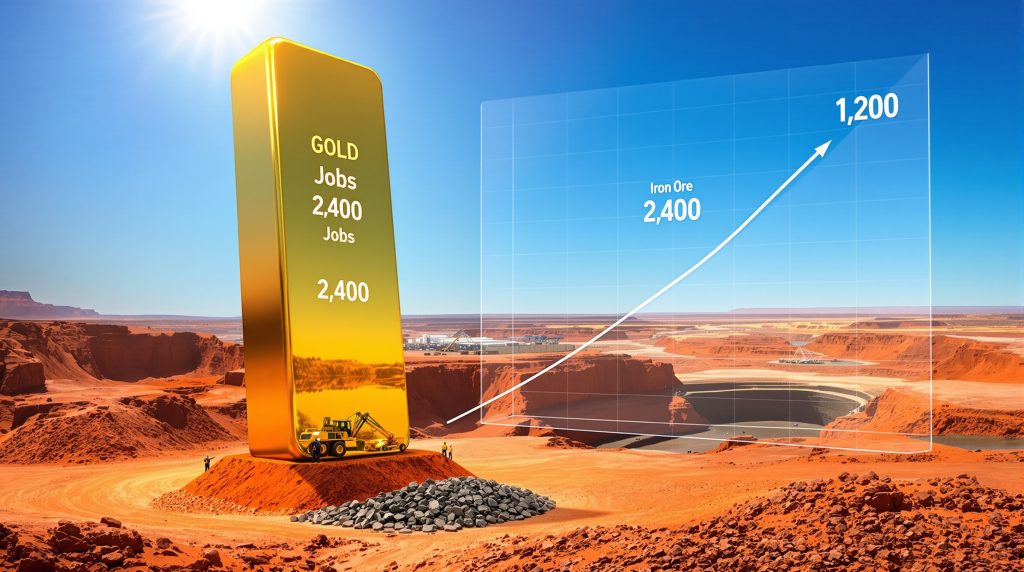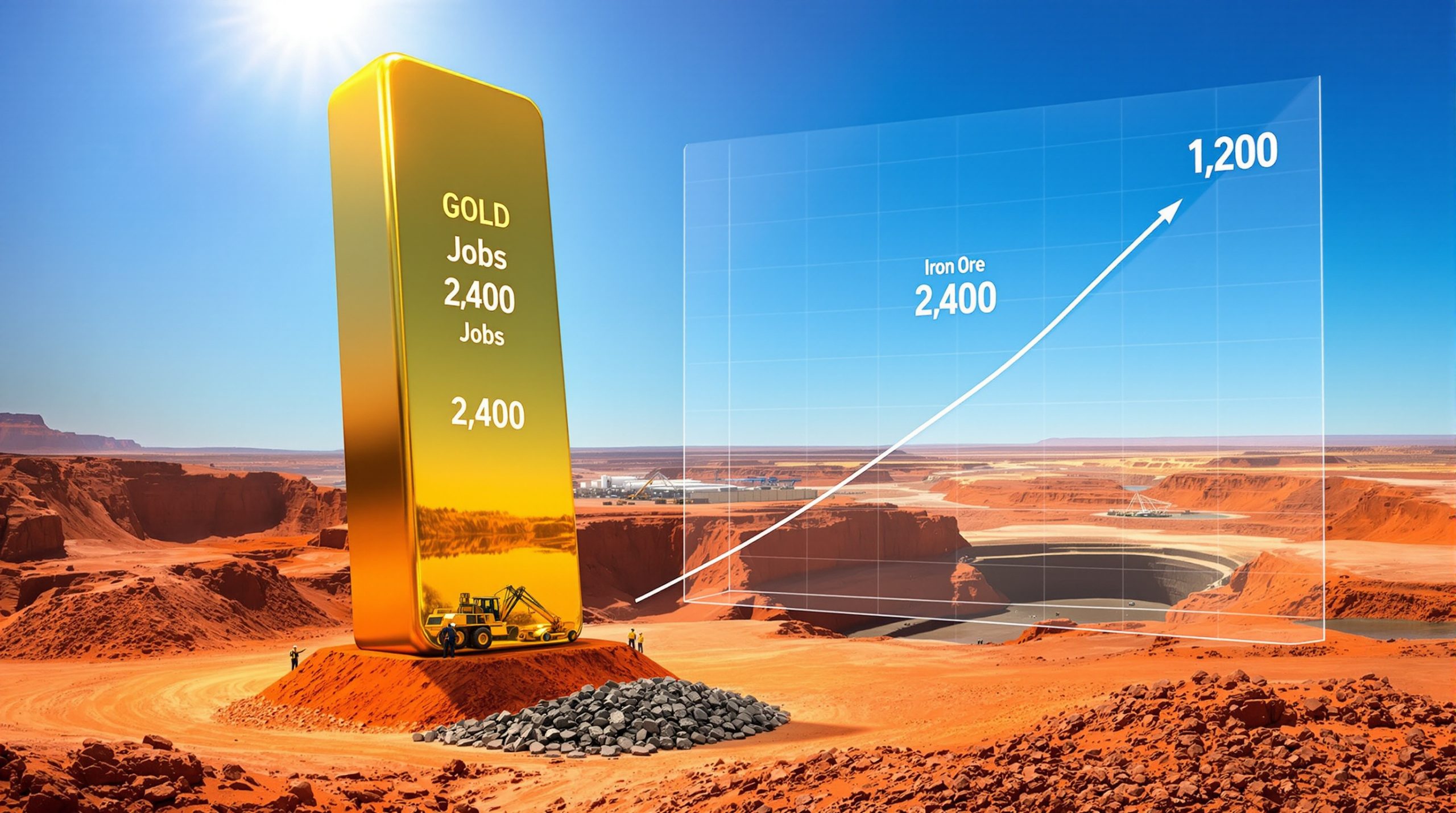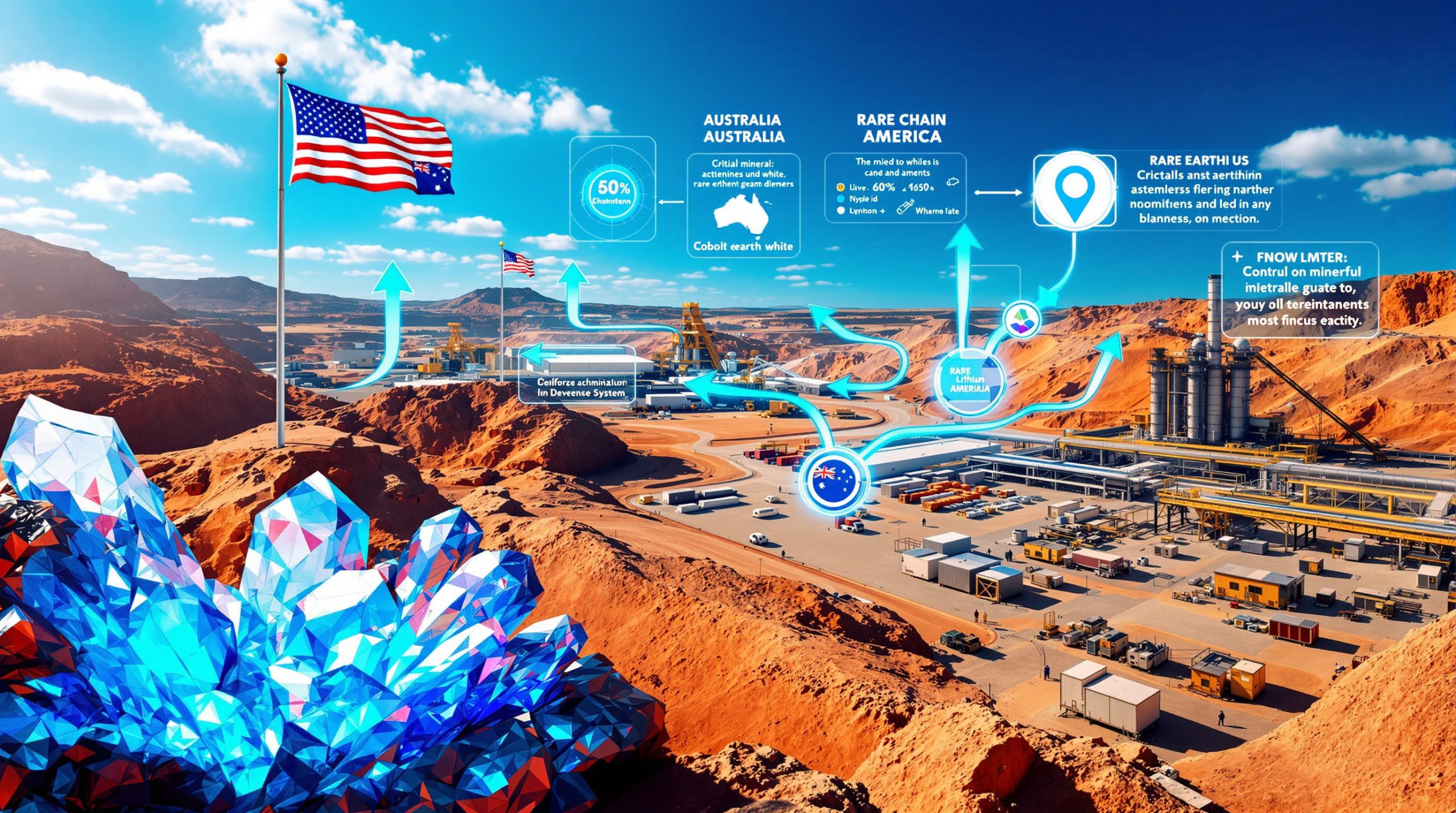The Gold Rush: How Western Australia's Mining Jobs Are Shifting from Iron to Gold
Western Australia's resources sector is witnessing a significant shift in employment patterns, with gold mining poised to create twice as many new jobs as the traditionally dominant iron ore sector over the next five years. This transformation reflects changing market dynamics, record gold prices, and strategic investment in new projects across the state.
According to the Australian Resources & Energy Employer Association's latest workforce forecast, gold mining is expected to generate approximately 2,400 new positions through 2030, compared to 1,200 new jobs in iron ore. This represents a notable rebalancing in a state where iron ore has long been the economic cornerstone.
The Numbers Behind Western Australia's Mining Employment Boom
The resources sector in Western Australia is projected to require about 9,000 additional workers over the next five years, with gold mining emerging as the standout growth area. This comes as gold prices reached unprecedented heights in 2025, recently climbing above US$3,764 per ounce—a more than 50% increase over the past 18 months.
| Mining Sector | Projected New Jobs (2025-2030) | New Projects Planned |
|---|---|---|
| Gold | 2,400 | 11 |
| Iron Ore | 1,200 | 4 |
| Other Minerals | 5,400 | Various |
| Total | 9,000 | – |
How Is Gold's Rising Value Reshaping Western Australia's Mining Landscape?
The exceptional performance of gold has catalyzed substantial investment in the sector. With Australia producing approximately 300 tonnes of gold valued at $50 billion in the last financial year, the economic significance of this precious metal has never been clearer.
Professor Allan Trench from the University of Western Australia Business School notes that the balance of power has moved toward gold, given the massively greater interest and new investment in gold, particularly with the high prices of the last one-to-two years.
Gold's Contribution to Western Australia's Economy
While gold mining is gaining momentum, it's important to understand its economic contribution in context. Iron ore remains Western Australia's primary export revenue generator and royalty contributor:
-
Iron ore royalties: Approximately $10 billion annually
-
Gold royalties: Currently around $1 billion annually (potentially increasing to $2 billion with rising prices)
This disparity highlights that while gold mining employment is growing faster, iron ore continues to be the state's economic powerhouse.
Where Are the New Gold Mining Jobs Being Created?
The projected 2,400 new gold mining positions will be distributed across 11 new projects throughout Western Australia. These developments include major expansions of existing operations and entirely new mines.
Key Gold Projects Driving Employment Growth
-
Kalgoorlie Super Pit Expansion: The recent approval of an 800-bed worker accommodation facility signals significant growth at this iconic mine. The expansion aims to make it Australia's largest gold mine.
-
Hemi Gold Mine (Pilbara): This developing project in the Pilbara region represents a significant new gold operation outside the traditional Goldfields region.
-
Additional Goldfields Operations: The traditional gold mining hub around Kalgoorlie-Boulder continues to see substantial investment and expansion.
City of Kalgoorlie-Boulder deputy mayor Kirsty Dellar expressed confidence in the sector's growth, noting the extensive development and major project expansions within the region, particularly in gold.
What Types of Skills Are in Demand for Gold Mining Jobs?
The gold mining sector requires a diverse range of skills, with particular emphasis on specialized technical roles that are crucial for underground operations—a common mining method in gold extraction.
High-Demand Mining Roles in Western Australia
-
Technical specialists: Geologists, mining engineers, and processing specialists
-
Underground mining experts: A particular need in gold operations
-
Equipment operators: Truck drivers, loader operators, and other machinery specialists
-
Maintenance personnel: Mechanical and electrical trades
-
Environmental and safety professionals: Growing importance with increased regulatory requirements
-
Automation and technology specialists: As mining operations become more technologically advanced
Is Iron Ore Mining Declining in Western Australia?
Despite the stronger job growth projections for gold mining, industry experts emphasize that iron ore mining is not facing a significant downturn. Rather, the sector is experiencing a more mature phase with fewer new projects but continued operational strength.
Tom Reid, industry director at the Australian Resources & Energy Employer Association, clarified that iron ore trends have dropped down in terms of the number of projects—with only four in this year's report—but these will still require about 1,200 workers. It's not really a downturn in WA, but rather a warning signal about regulatory red tape and approval processes.
The Resilience of Iron Ore Communities
Communities built around iron ore mining, such as Paraburdoo in the Pilbara, have demonstrated resilience through previous market fluctuations. Longtime resident Linton Rumble, who has lived in the town for 40 years, observed that iron ore towns are somewhat insulated from industry fluctuations. The attitude is always to keep the iron ore trains rolling, and people with jobs in town often don't even notice downturns.
How Does Gold Mining Compare to Iron Ore in Operational Terms?
Gold and iron ore mining operations differ significantly in scale, processing requirements, and market dynamics.
Key Operational Differences Between Gold and Iron Ore Mining
| Aspect | Gold Mining | Iron Ore Mining |
|---|---|---|
| Typical Deposit Size | Smaller, higher grade | Massive, lower grade |
| Mining Method | Often underground or combined | Primarily open-pit |
| Processing Complexity | Higher (chemical extraction) | Lower (primarily crushing/screening) |
| Market Volatility | Higher (investment-driven) | Lower (industrial demand) |
| Labor Intensity | Higher per tonne produced | Lower per tonne produced |
| Environmental Footprint | Smaller physical footprint, chemical concerns | Larger physical footprint |
These operational differences explain why gold mining often requires more workers relative to production volume compared to iron ore operations. As Linton Rumble noted, gold mining involves more complex processes before the product can reach the market, unlike the relatively straightforward extraction of iron ore.
What Are the Economic Benefits of Diversifying into Gold?
The growing prominence of gold mining offers Western Australia several economic advantages beyond simple job creation.
Advantages of a More Balanced Mining Economy
-
Reduced dependency on a single commodity: Less vulnerability to iron ore price fluctuations
-
Different market drivers: Gold often performs well during economic uncertainty, providing a counter-cyclical balance
-
Regional development: Gold operations are distributed more widely across the state
-
Skills diversification: Different mining methods require varied expertise, building a more versatile workforce
-
Supply chain resilience: Diversified mining activity supports more robust local supply chains
Professor Trench summarized the situation optimistically, suggesting that Western Australia can "have its cake and eat it too" since iron ore isn't going away anytime soon, and additional activity in gold mining provides further economic benefits.
What Challenges Face Western Australia's Gold Mining Expansion?
Despite the positive growth outlook, several challenges could affect the projected employment growth in gold mining.
Key Challenges for Gold Mining Employment
-
Skills shortages: Technical roles like geology, engineering, and processing face persistent recruitment difficulties
-
Remote location challenges: Many gold operations are in isolated areas, complicating workforce attraction and retention
-
Housing pressures: Mining communities like Kalgoorlie face housing constraints as workforces expand
-
Training capacity: Ensuring sufficient training programs to meet growing workforce needs
-
Permitting challenges: Approval processes and regulatory red tape may delay project timelines
Tom Reid from AREEA specifically highlighted regulatory concerns as a potential impediment to mining industry evolution, suggesting these issues need addressing to maintain sector expansion.
How Will Gold Mining Shape Western Australia's Future?
The projected growth in gold mining employment represents more than just job numbers—it signals a potential rebalancing of Western Australia's resources economy.
For regional communities like Kalgoorlie-Boulder, the expansion of gold mining operations brings renewed economic vigor. Deputy Mayor Dellar highlighted the broader impacts, explaining that more jobs mean more families choosing to live, invest, and contribute within the community. This drives education and training—with facilities like the School of Mines in Kalgoorlie—providing confidence and a positive atmosphere throughout the entire region.
Long-term Outlook for Western Australia's Mining Employment
While gold mining job growth is currently outpacing iron ore, the long-term employment landscape will likely be shaped by several factors:
-
Commodity price trends: Continued high gold prices will sustain investment and employment
-
Technological advancement: Increasing automation may moderate job growth over time
-
Regulatory environment: Approval processes and environmental regulations will influence project timelines
-
Global demand patterns: Changes in industrial demand and investment trends
-
Exploration success: New discoveries will drive future project development
Conclusion: A Golden Opportunity for Western Australia
Western Australia's mining sector is entering a period of transformation, with gold mining emerging as a significant driver of employment growth. While iron ore remains the state's economic foundation, the projected creation of 2,400 new gold mining jobs over the next five years represents an important diversification of the resources economy.
This shift offers both opportunities and challenges for communities, workers, and policymakers. As Professor Trench noted, the ideal scenario allows Western Australia to benefit from both sectors: maintaining iron ore's economic contribution while embracing gold market surge.
For job seekers, the message is clear—Western Australia's gold mining sector is entering a golden era of opportunity, with diverse roles across 11 new projects. According to recent analysis from ABC News, as gold prices remain strong and investment continues to flow, the sector's employment growth appears set to outshine even the state's traditional iron ore powerhouse.
Disclaimer
This article contains forecasts and analysis based on current market conditions. Commodity prices and employment projections may change based on global economic factors, regulatory changes, and technological developments. Readers should consider seeking professional advice before making investment or career decisions based on this information.
Are You Interested in Investing in the Next Major Mineral Discovery?
Discover why significant mineral findings like those in Western Australia's gold sector can lead to substantial investment returns by exploring Discovery Alert's dedicated discoveries page, where our proprietary Discovery IQ model provides real-time alerts on ASX mineral announcements that matter. Start your 30-day free trial at Discovery Alert today to position yourself ahead of the market.




